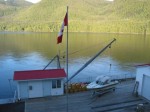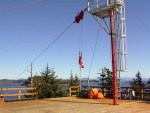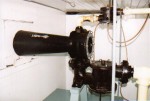David Robert Edgington (May 14, 1943 – April 11, 2012) Dave passed away peacefully on Wednesday, April 11, 2012 at the Victoria Hospice. He was born in England on May 14, 1943 and moved to Canada in 1955.
He worked as a Light Keeper in BC for many years and loved to build and fly RC planes. He leaves behind his loving wife Louise, sons David (Cleo) and Wayne (Misty), grandsons David and Aiden, brothers Marty (Linda) and Rob.
He will be missed by all who new him. He was a dedicated lightkeeper and a great friend.
To include your memories in David’s memorial please click this link.
I came across this article while searching for Dave’s obituary. I think it describes him better. He was a dedicated lighthouse keeper, as we all were/are.
Keeper of the Light: Estevan Point, British Columbia (Canada) – Jake Halpern
Dave Edginton lives at the seas’ edge in a gothic tower that shoots up from the rocks like a petrified geyser. All night long as huge rolls of seawater slam against its base, Dave sits perched on the tower’s peak, peering through the zoom of his binoculars. He’s staring out into what many call the “Graveyard of the Pacific,” a turbulent expanse of sea whose floor is strewn with the carcasses of hundreds of wrecked ships. Tonight, more than anything else, Dave hopes to find a ship in need of help – then he can scurry down the tower’s dizzying spiral staircase, hop in his speedboat, and cruise out into the whitecaps. Even the most intrepid lighthouse keepers of years past would regard such hopes as foolhardy, but for Dave Edginton, this may be the only way to keep his home.
Life has never been easy for lighthouse keeper on Estevan Point. Almost fifty miles from the nearest road, the station’s lone tower is a monumental embodiment of stand-alone courage. At the turn of the century, when the structure was first built, keepers had to wander for days through the forest to reach civilization. “Think of it,” says Dave Edginton. “No safe boat landing, no roads in, just a trail the work gangs hacked through the forest and maybe the odd mule or something. It just goes to show you how tough the old boys were at the turn of the century.” Often the isolation proved unbearable. Before the advent of radios, one B.C. lighthouse keeper wrote a letter to his supervisors that conveyed this point exactly: “Would you please send someone up here at once as my wife has gone crazy and I want to get her to town at once.”
Today, Estevan Point is definitely more accessible. While there are still no roads, Dave is able to get in and out by seaplane. Needless to say, Dave and his wife still live in isolation; and somewhat ironically, it’s the loss of this isolation that now constitutes his biggest fear. Like many lighthouse keepers along the coast, Dave is facing replacement by an automated counterpart. Now his best hope for keeping his home is doing the one thing mechanized lighthouses can’t do – save sailors lives. A handful of lighthouse enthusiasts have successfully lobbied to keep stations manned for exactly this reason, and now it’s up to Dave Edington to prove his worth. There are only a handful of manned lighthouses left in all of North America, and Estevan Point is one of them. For two decades Dave has been pulling sailors out of the sea. It’s a dangerous way of life, but Estevan Point is Dave’s home, and now more than ever it’s imperative that he earns it.







